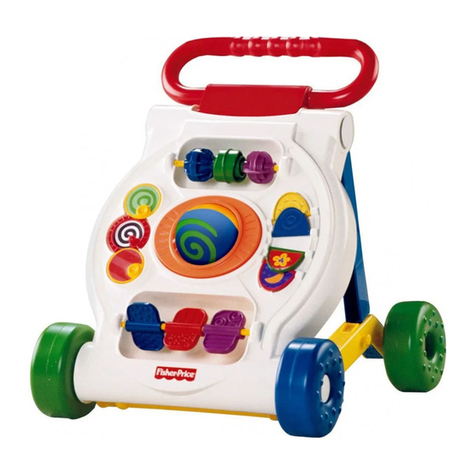Classics hangac Focke Wulf Ta 152 H User manual

1

Focke Wulf Fw 190 D
and
Focke Wulf Ta 152 H
Expansion for Microsoft Flig t Simulator X
User Manual
2

A Production of
Classics Hangar
Mathias Pommerien
Uelzen
Germany
support
@classics- angar.de
ttp://www.classics- angar.de
System Requirements:
Windows XP SP 2 , Windows Vista, Windows 7 or Windows 8,
Microsoft Flig t Simulator X @ Service Pack 2, Gold or Acceleration Expansion Pack,
Dual Core Processor @ 2.4 GHz or better
512 MB DX9 Grap ics Card
350 MB Disk Space for t e Executable 1,46 GB for t e Installation.
Copyrig t 2013 Classics Hangar Mat ias Pommerien, Uelzen, Germany, unless stated
ot erwise. All rig ts reserved. Sound module licensed to Classics Hangar by Bill Leaming.
No re-use/re osting/redistribution of any part of t is work is permitted wit out prior
written permission by Mat ias Pommerien. Microsoft Windows 2000, Windows, XP, Vista,
Windows 7, Windows 8 and Flig t Simulator are eit er registered trademarks or
trademarks of Microsoft Corporation in t e USA or ot er countries.
3

Table Of Content
Introduction................................................................................................... 5
Fw 190 D-9.................................................................................................... 5
Fw 190 D-11.................................................................................................. 6
Fw 190 D-13.................................................................................................. 8
Ta 152 H ….................................................................................................... 9
Before you begin............................................................................................ 11
Paintkit.......................................................................................................... 11
T e Cockpit.................................................................................................... 12
Operating t e FS-aircraft................................................................................. 12
Flying at nig t................................................................................................ 13
Fw190D Panel................................................................................................ 13
Fw190D left Console....................................................................................... 14
Fw190D rig t Console..................................................................................... 15
Ta152H Panel................................................................................................. 16
Ta152H left Console................................................................................. 17
Ta152H rig t Console.............................................................................. 18
Fuel Management........................................................................................... 19
Gear Operation............................................................................................... 19
Flaps Operation.............................................................................................. 20
Ta152H pressurized cabin................................................................................ 21
Using Bombs.................................................................................................. 22
Credits........................................................................................................... 23
4

Introduction
T e t ird part of t e award winning Classics Hangar Fw190 series puts you into t e
cockpit of t e last models of t is exceptional German fig ter aircraft of World War II, t e
Focke Wulf Fw 190 D and t e ig altitude fig ter Focke Wulf Ta 152 H.
Find out ow t e Fw 190 D restored t e competitiveness of t e Luftwaffe's fig ter stable
and experience w y t e impressive performance of t e Ta 152 H became a live insurance
for it's pilots during t e final battles of t e war.
T e cockpits are researc ed and implemented wit t e familiar Classics Hangar love for
detail and accuracy.
A tool elps you to configure your FSX for t e use of t e ig ly detailed 2048 or 4096
pixel textures. A payload manager allows you to c ange fuel and payloads „on t e fly“
wit out pausing t e simulation and also grants easy access to some selected simulation
commands. T e fully functional virtual cockpit is completed by a 2d radio w ic combines
a vintage look wit access to modern COMM, NAV and ADF functionality.
T e AvHistory '6DoF' flig t dynamics not only let you fly t e Fw190D and Ta152H “by t e
numbers” but also give you an organic sense of flying t ese impressive mac ines t roug
air.
Fw190D-9
Already by early 1942 Focke Wulf began construction work wit different engines in an
effort to improve t e Fw190's ig altitude performance. On sc edule were plannings for
projected variants B, C and D. Since t e Junkers Jumo 213 equipped Fw190D promised
t e most potential trials began by September 1942 wit t e Fw190V17 test aircraft.
T e water-cooled inverted V in-line engine Junkers Jumo 213A offered 1750 metric HP
take off power and promised a greatly improved ig altitude performance.
Implementation of t e new engine required a number of c anges to t e original airframe.
T e engine mount was strengt ened and t e engine nacelle was increased by some 60
centimeters/2 ft. Dive speed was improved t anks to t e more streamlined nacelle.
To improve t e center of gravity a 500mm/1.6ft long cylindrical connecting piece was
inserted in front of t e tail fin, t e socalled “Rumpftonne” (fuselage drum) and a
140mm/0.4ft wide steel case was added to t e vertical fin.
Since t e Jumo 213 offered improvements merely at ig er altitudes efforts continued to
improve it's performance. W en t e Fw190D-9 first entered service by October 1944, all
delivered aircraft received a manifold boost kit t at increased power to 1900 metric HP.
During t e production met anol-water cooling was implemented t at allowed for anot er
performance increase to 2100 HP take off power.
T e armament wit two MG131 mac ine guns in t e upper nose and two 20mm cannons
MG151/20 was similar to t at of t e Fw190A-8 w ic was t e constructional base of t e
D-9 as indicated by t e numbering sequence in t e name: T e A-8 develops into t e D-9.
Like it's predecessor t e D-9 was able to carry a variation of payloads, amongst t em a
droptank or a bomb on an ETC 504 rack under t e fuselage.
T e first unit to convert to t e Fw190D was II./JG 54 by October 1944.
W en t e Fw190D-9 finally entered service it was merely meant as a stop gap until t e
new Ta152 reac es production status, ironically it turned into one of t e major Fw190
variants overall wit some 1804 examples being produced until war's end.
5

Fw190D-9, 4./JG 2. Note t e old style canopy, indicating t e initial FW production batc .
Fw190D-9, Stab II./ JG 26. Note t e later style blown canopy ood.
Fw190D-11
A new and improved engine Jumo 213 F was already undergoing test runs w en t e D-9
entered production. T e 3 stage two gear Jumo 213F wit a greatly improved critical
altitude was basically t e same engine as t e 213E w ic was sc eduled for t e Ta152H
excluding t e intercooler. Like wit t e 213A, superc arger air was cooled by means of
met anol water injection. A small series of about 20 aircraft Fw190D-11 was produced
during February 1945 utilizing t e Jumo 213F. T e nose MG 131 were deleted from t e
D-11 allowing for a more streamlined cowling. Instead a pair of MK 108 cannons was
mounted in t e outer wings.
6

Fw190D-11, Platzsc utzstaffel JV 44. Note t e Jumo213's enlarged oval air intake and t e streamlined upper
cowling. Also note t e old style canaopy, probably being added to t is particular mac ine during a repair.
Fw190D-11, Verbandsfü rersc ule GdJ.
Fw190D-12
Like D-11, but Mk 108 firing t roug t e propeller ub, outer wing cannons deleted.
T ere's no reliable information available on t is subtype so t ere is no depiction included.
Fw190D-13
Like D-11, but MG151/20 cannon firing t roug t e propeller ub, no outer wing cannons.
T ere were supposedly only two test aircraft of t e D-13 produced and delivered to
operational units. One of t em was captured intact by t e allied at Flensburg-Weic e
airfield in Nort ern Germany. “Yellow 10” was obviously t e personal mount of t e
Gesc wader's last Kommodore Major Franz Götz as evidenced by t e lettering
“Kommodore” under t e radiator. T e aircraft was selected for evaluation and ferried to
7

Gilze-Rijen airfield in t e Net erlands and later to C erbourg in France and s ipped to t e
USA. After a decades-long Odyssey and several restorations t e Fw190D-13 “Yellow 10” is
today part of t e Flying Heritage Collection of multi millionaire and aviation ent usiast Paul
Allen and is on display at t e Museum of Flig t in Seatlle, USA.
T is is t e sole known example of it's subtype and additionally one of only two surviving
Doras worldwide so we pay some special attention to it. Fw190D-13 “Yellow 10” comes in
t ree different paint sc emes documenting it's istory over t e decades: T e colors it
wore during it's service wit JG 26, it's state after being captured and ferried to Gilze-Rijen
and finally t e fres colors of today as on display in t e Museum of Flig t.
Fw190D-13, JG 26
Fw190D-13, „USA 14“
8

Fw190D-13, Flying Heritage Collection
a 152 H
Intelligence reports indicated t at t e Americans were working on pressurized cabins and
ig altitude engines. To counter t e t reat in time t e RLM – t e German air ministry-
filed t e requirements for a ig altitude fig ter to t e Messersc mitt and Focke Wulf
factories. Focke Wulf's tec nical director Kurt Tank was onoured w ilst all new designs
were to receive is name. Under t e designation “Ta152A” e offered a eavy fig ter
based on t e Fw190A equipped wit t e Junkers Jumo 213, but since t is engine was not
readily available by t at time t e project was cancelled altoget er. Planning on a t en
designated Ta152H (H= “Hö e” - altitude) continued by mid 1944. Compared wit t e
Fw190D-9 t e new ig altitude fig ter ad a greatly enlarged wing wit an aerodynamic
area of about 23.5m²/253ft² and a pressurized cabin. T e engine was yet again moved
forward by 672mm/2.2ft to accommodate for t e Mk108 engine cannon. T e wing was
moved forward by 420mm/ 1.38ft and t e fuselage drum was added in front of t e tail fin.
T e tail assembly itself was t e new so-called “Ein eits eck” (standard tail) w ic could
also be mounted to any ot er version of t e Fw190. Due to t e pressurization
requirements t e signal flares were to be operated electrically. A switc box was located
below t e main panel and t e flares were located in t e fuselage drum 4 on eac side.
How desperate t e situation was for t e Luftwaffe t at late during t e war is evidenced by
t at t at t e Ta152H-0 pre production aircraft were forced into production after just 30
ours and 52 minutes flying time wit t e prototypes. Teet ing problems wit t e
pressurized cabin and t e centre of gravity were not fully ironed out by t is time.
T e Ta152H's Jumo 213E was equipped wit an intercooler t at allowed for additional
met anol water boost giving t e engine a take off power of about 2250 metric HP.
T e H-0 used GM-1 nitrous oxide injection, t e H-1 carried additional 383 liters of fuel and
75 liter met anol-water in wing tanks. GM-1 nitrous oxide was limited to 85 liters due to
centre of gravity considerations.
T e sole unit to ever be equipped wit t e Ta152H was JG 301 w o received an unknown
number of Ta152H-0 and H-1 beginning by January 1945. T ere's currently proof for 44 H-
0 and 25 H-1, totalling a production 69 aircraft.
9

Ta152H-0, green 4, Stab/JG 301
Ta152H-1, yellow 1, 7./JG 301
10

Before you begin
Texture-Manager:
T e Classics Hangar Fw190D/Ta152H comes wit a texture resolution twice or four times
as ig as t e default resolution. Making full use of t e ig er resolution requires a certain
setting in t e FSX configuration file t at t e Texture Manager will do for you. You can also
configure to use eit er 2048 or 4096 pixel resolution textures. We suggest to use 2048
pixel textures initially.
You can re-run t e Utility at any time from t e following s ortcut:
„Start\All Programs\Classics Hangar\Fw190D - Ta152“
Note:
W enever you do c anges to t e grap ics settings from wit in FSX, t e configuration will
revert back to default values. As a result you may experience blurry textures wit your
aircraft. In t at case close FSX and re-run t e Texture Manager.
W en running t e Fw190D/Ta152H for t e first time, you will be prompted to allow
„ClassicsHangar_XMLSound.gau“ and “Payload_Manager.dll” to be added to t e trusted
list. Click Run and also click Yes in t e next po-up window to allow t e gauges to be
always trusted and allowed.
Paintkit
T ere is a layered paint kit in psd format available as an optional download to make easier
t e creation of user made repaints. A download link can be found at
„Start\All Programs\Classics Hangar\Fw190D - Ta152\c eck for updates“
he Cockpit
T ere are only little c anges in t e Fw190D cockpit w en compared to t e predecessor
Fw190A-8, all due to t e new engine Jumo 213. T ere is a new coolant temperature
indicator in t e lower panel, a met anol-water pressure gauge and an emergency andle
for t e so-called “Motorbediengerät”, t e motor control unit, basically t e Junkers-Pendant
of t e BMW 801 Kommandogerät. An already familiar feature wit t is motor control unit
is t e automatic rpm and mixture control so t e pilot can fully concentrate on flying t e
aircraft.
In t e Ta152H cockpit stands out t e fact t at many of t e panels are made of wood in
order to save alloys t at were on s ort supply t at late in t e war. T e cockpit sees t e
addition of a cabin pressure gauge and a switc box to operate t e electrically fused signal
flares as well as emergency valves for gear and flap operation w ic are implemented
ydraulically. Gear and flap indicators are eavily simplified.
Operating the FS Aircraft
In t e following we will discuss t e tec nical/procedural details of operating some specific
cockpit systems in t e aircraft.
11

Detailed start-up and flying procedures can be gathered from the in-flight
check-lists and references.
All gauges are in metric units, t e labels are naturally in German language. However, to
serve an international audience, all buttons, levers, gauges and labels s ow an Englis
language tool tip w en olding t e mouse over t em. All flig t and engine gauges display
a tool tip in international units.
Most systems are operated straig t forward, owever fuel usage, gear, trim and flap
operation may require a closer look and some practice to getting used to. T is is explained
fart er on in t is document.
Most buttons and levers are operated by a single left click. Some items suc as t e gear
andle or t e drop tank release use left click to pull and left-release to release.
Multi-position switc es suc as t e bomb selector or t e fuel tank display selector use left
and rig t clicks to step fore and back t roug t e positions. Rotating items like t e
compass rose can be dragged wit t e mouse or dialled wit t e mouse w eel.
A few items suc as t e fuses in t e rear electrical panel are animated but don’t ave a
specific FS function. T is is to find a good balance between realism and usability. You
probably don’t want to pus 20 buttons before your flig t instruments work w en
c anging a plane in FS.
Some buttons and switc es may not be easily in reac from wit in t e default virtual
cockpit view. To come around t is issue multiple camera views are arranged, accessible
using t e “A” and “S ift + A” keys on t e keyboard.
T e FuG 16 Radio was only accessible from a service flap on t e left fuselage side so
frequencies were pre-tuned and accessible by t e pilot via some remote controls in t e left
cockpit console. T e pilot only ad t e option to fine-tune a pre-selected frequency wit in
a limited range. To overcome t e limitations of t e wartime radios we developed a
vintage looking popup radio w ic gives you access to t e most common COMM, NAV and
ADF functions (S ift + 2). T e somew at impractical use of t e virtual cockpit buttons in
older version of our Fw190 simulation as been largely dropped except t e OBS operation.
A load manager (S ift + 3) grants you easy access to fuel and bomb load as well as easy
operation of some commonly used FS operations.
Flying at Night
T ere is no gauge back lig ting in t e Fw 190. However, dials and labels are painted wit
“Leuc tpaste”, a fluorescent w ite paint t at illuminates wit a green glow in t e dark.
12

Fw190D Panel
1. Ammo Counter 12. Gear Handle
2. Gun sig t 13. Fuel Cock
3. AFN2 Radio Navigation Indicator 14. Engine Control Unit Emergency Handle
4. Cockpit Vent 15. Drop Tank Release
5. Altimeter 16. Oil/Fuel Pressure
6. Airspeed Indicator 17. Oil Temperature
7. Turn Coordinator/ Art. Horizon 18. Coolant Temperature
8. Variometer 19. MW-50 Pressure
9. Electr. Slave Compass/OBS 20. Fuel Content
10.Manifold Pressure 21. Low Fuel Indicators
11.RPM Indicator 22. Fuel Content Display Selector
23. Oxygen Blinker
24. Oxygen Pressure
25. Oxygen Valve
13

Fw190D left Console
1. Primer Pump 6. Lever T rottle
2. Gear and Flaps Toggles 7. MW-50 Switc
3. Trim Switc 8. Magnetos
4. Gear Indicator 9. Main Circuit Breaker
5. Trim Indicator 10. Cockpit Lig ts
14

Fw190D right Console
Fuses/Switc es
1. Canopy Handle a. Bomb
2. On board Clock wit Stop Watc b. Gun Sig t (n.F.)
3. Starter c. Gauges (n.F.)
4. Canopy Emergency Release d. Position Lig ts
5. Fuel Pump Forward Tank e. Cockpit Lig ts
6. Fuel Pump Rear Tank f. Pitot Heat
7. Fuel Pu,p Drop Tank g. Ignition
. Radios
i. Generator
j. Battery
15

a 152 H Panel
1. Ammo Counter 11. Gear Lever
2. Gun Sig t 12. Fuel Cock
3. AFN 2 Radio Navigation Indicator 13. Engine Control Unit Emergency Handle
4. Altimeter 14. Drop Tank Release
5. Airspeed Indicator 15. Gear Emergency Valve
6. Turn Coordinator/Art. Horizon 16. Flaps Emergency Valve
7. Variometer 17. Oil/Fuel Pressure
8. Electr. Slave Compass/OBS 18. Oil Temperature
9. Manifold Pressure 19. Coolant Temperature
10.RPM Indicator 20. Fuel Content Indicator
21. Low Fuel Warnings
22. Fuel Content Display Selector
23. Oxygen Blinker
24. Oxygen Pressure
25. Oxygen Valve
26. Hydraulic Pressure
27. Signal Flare Switc es
28. Cockpit Pressure Indicator
16

a 152 H left Console
1. Canopy Locking 7. WEP Switc
2. Primer Pump 8. GM-1 Vent (n.F.)
3. Flaps Lever 9. MW-50/GM-1 Selector ( H-1 only)
4. Lever T rottle 10. Power Switc
5. Trim Switc 11. Magnetos
6. Trim Indicator 12. Gear and Flaps Indicator
17

a 152 H right Console
Fuses/Switc es
a. Fuel Pump Drop Tank 1. Cockpit Lig ts
b. Fuel Pump Rear Tank 2. Canopy Handle
c. Fuel Pump Forward Tank 3. Canopy Emergency Release
d. Instruments (n.F.) 4. Starter
e. Radios
f. Compass (n.F.)
g. Pitot Heat
. FuG 25 (n.F.)
i. Elevator Trim
j. Flig t Gauges
k. Gun Sig t (n.F.)
l. Position Lig ts
m.Equipment (n.F.)
n. Cockpit Lig t
o. War Emergency Power
p. Converter
q. Ignition
r. Generator
s. Battery
t. External Battery (n.F.)
18

Fuel Management
T e engine always draws it's fuel from t e Forward Tank, t e Rear Tank feeds t e Forward
Tank and Drop Tank feeds t e Rear Tank.
T e Fuel Lever in t e lower forward panel opens t e fuel valve.
T e Fuel Content Display (lower Forward Panel) s ould be set to display Rear Tank
Content initially, Switc to Forward Tank Content w en all but t e Forward Fuel Tanks are
empty.
T e fuel pumps (switc es in rig t console, centre) transfer fuel among t e tanks, allowing
for a proper fuel circulation:
1.) W en flying wit internal fuel only (Forward and Rear Tank) bot t e Forward Tank
Fuel Pump and t e Rear Tank Fuel Pump are to be switc ed on. T e Rear Tank Fuel
Pump is to be switc ed off as soon as t e Rear Tank is empty to avoid t at t e
pump is running dry. Switc Fuel Content Display to Forward Tank.
2.) W en Flying wit Drop Tank (or wing tanks in t e Ta152H-1 respectively) all t ree
t e Forward-, Rear-, and Drop Tank Fuel Pump are to be switc ed on initially. W en
t e Drop Tank is empty, turn off t e corresponding Fuel Pump and release t e
empty Tank (red Lever, lower forward panel). Continue as described in 1.). T ere is
no indicator for Drop Tank Content. T e Drop Tank is empty as soon as t e Rear
Tank Fuel Content begins to drop.
Gear Operation
T e gear is driven by an electrical motor.
As t e gear retracts, a pressurized air bottle is loaded w ic lowers t e gear in t e event
of an electrical failure.
T e electrical gear switc es are located in t e left console fairly at t e centre in a
combined instrument along wit t e flap switc es (Figure 1).
T e gear unlock mec anism (Figure 2) is located left and in t e lower forward panel,
labelled “Notzug Fa rwerk”.
Retract gear: remove safety cover from switc 2 (Figure 1) and press it.
Extend gear: press switc 1 (Figure 1) to activate t e gear motor,
next pull t e lever (Figure 2) to unlock t e gear.
WARNING!
19

Always activate t e gear motor before pulling t e lever except in an
emergency. T e gear can no longer be retracted ot erwise.
Pic.1 Pic. 2
Gear Operation a152H
T e Ta152 gear is operated ydraulically. A lever is located in t e lower left panel.
Flaps Operation Fw190D
T e flaps are operated electrically by pus buttons in t e left console.
Button 1 (Figure 1) Landing 60°
Button 2 (Figure 1) Take-off 12°
Button 3 (Figure 1) Fully retracted
Status indication is provided mec anically on top of eac wing (Figure 2)
and electrically by a combined gear/flap indicator (Figure 3)
“Ein”, Red lig t = fully retracted
“Start” Orange lig t = 12° take-off position
“Aus” Green lig t = 60° landing position
Pic.1 Pic. 2
20
This manual suits for next models
1
Table of contents
Popular Toy manuals by other brands

Eduard
Eduard Tornado GR.4 undercarriage quick start guide

Famosa
Famosa Feber Magic Fairy quick start guide
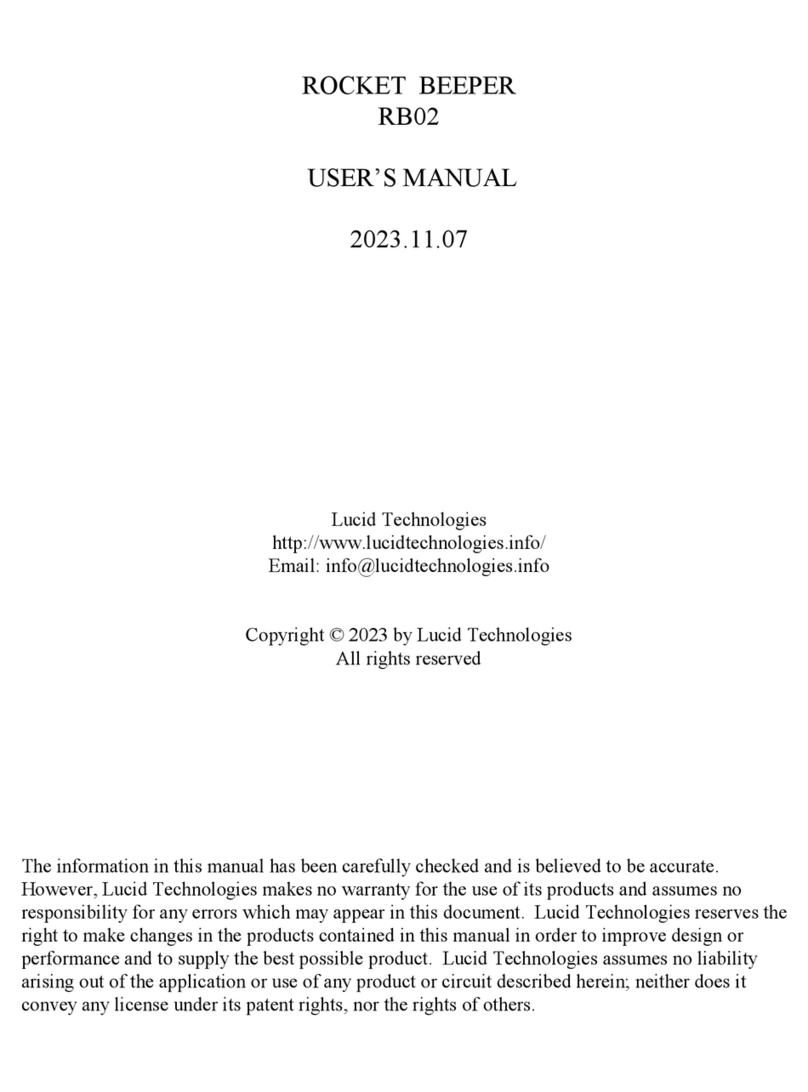
Lucid Technologies
Lucid Technologies ROCKET BEEPER RB02 user manual
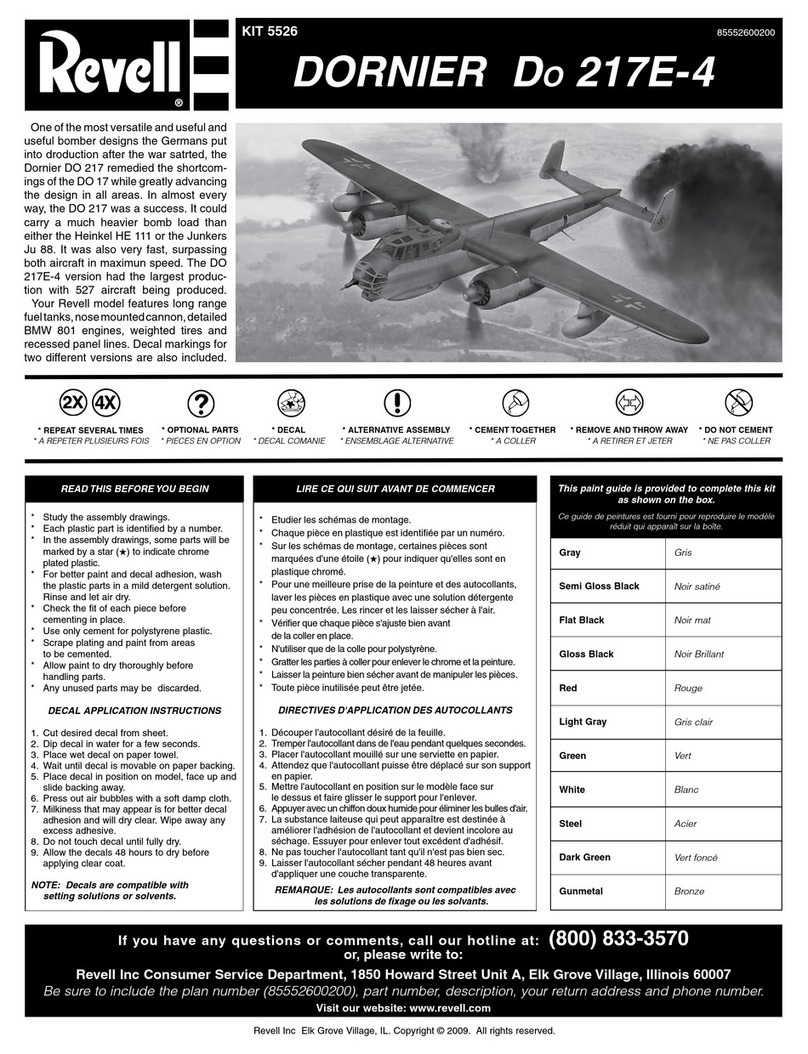
REVELL
REVELL KIT 5526 Assembly manual
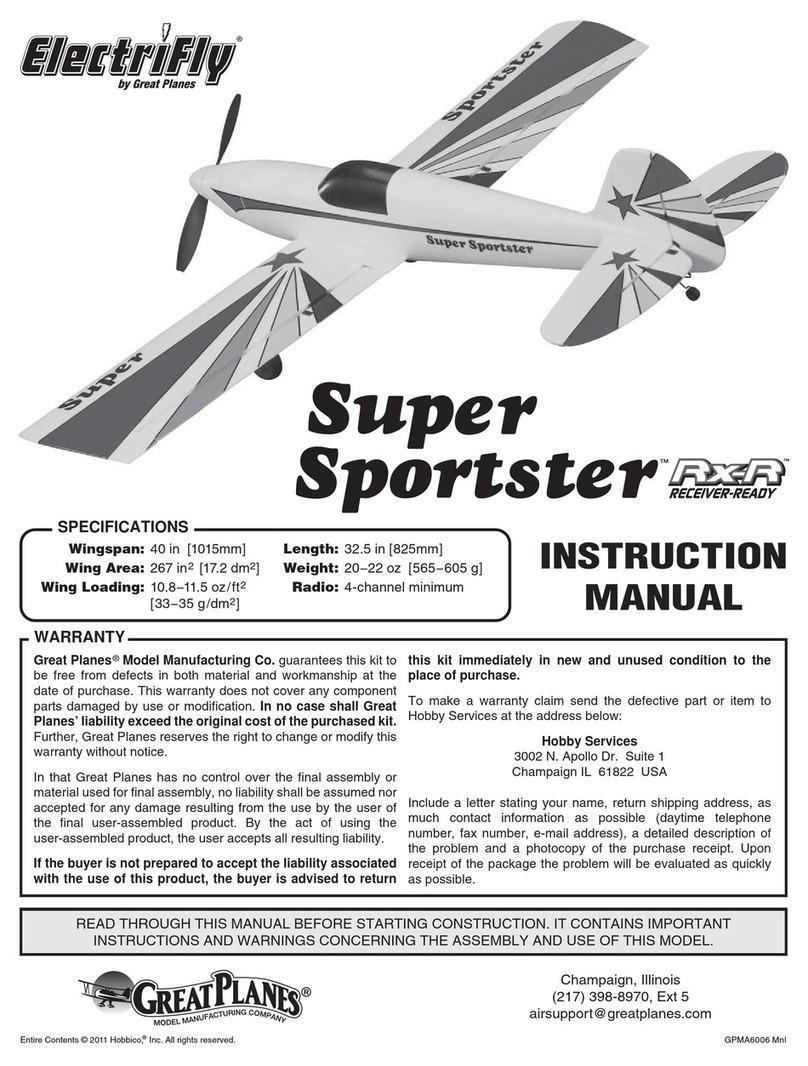
electrifly
electrifly Super Sportster RX-R instruction manual

LEGO
LEGO NEXO KNIGHTS 70310 Building instructions
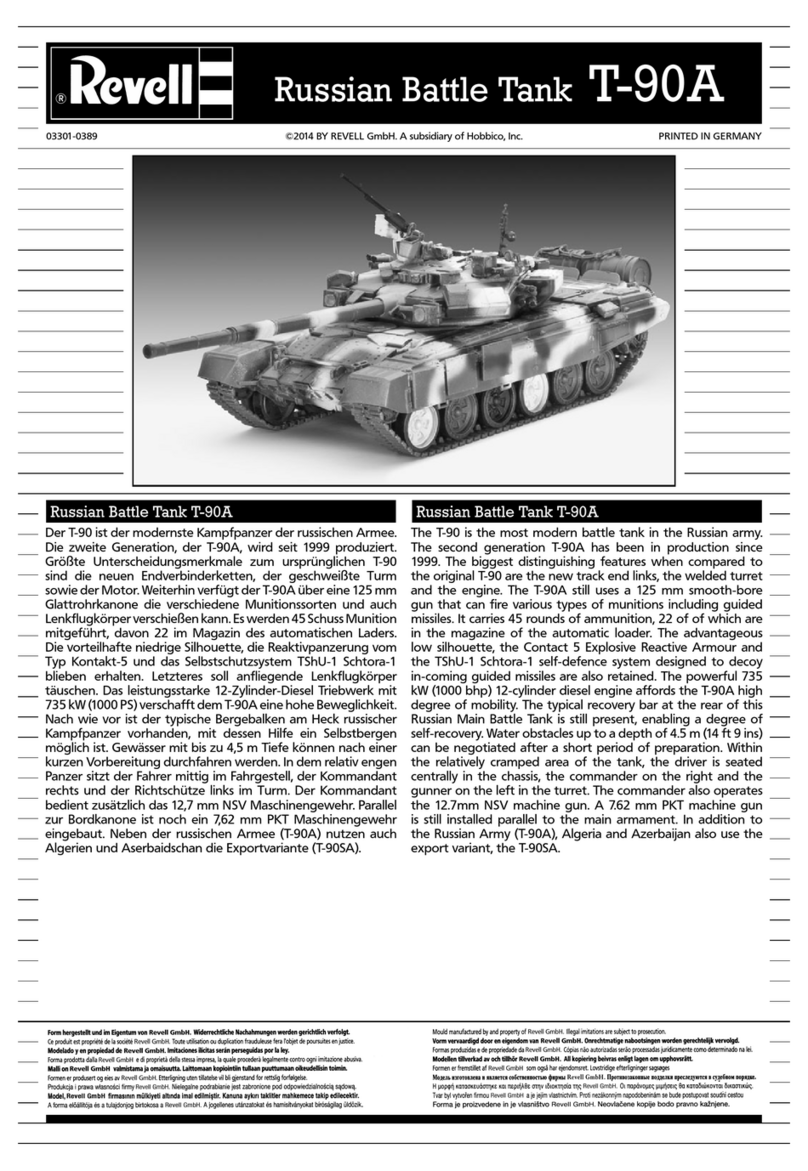
REVELL
REVELL Russian Battle Tank T-90A Assembly manual
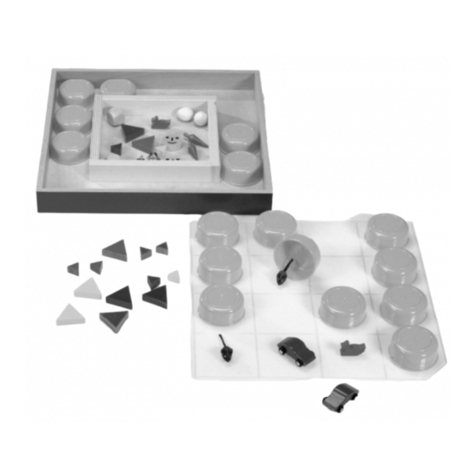
Toys for life
Toys for life MINI MEMO instructions

Eduard
Eduard FE 1244 quick start guide

PlayMonster
PlayMonster 5 Second Rule quick start guide

Thames & Kosmos
Thames & Kosmos Gumball Machine Maker Experiment manual

Lionel
Lionel Oil Tank owner's manual


